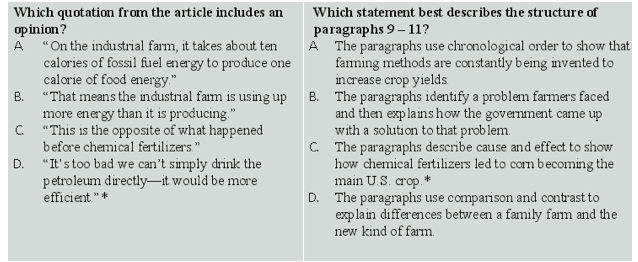As a teacher, I asked myself one question every day – a question that I knew would continually improve my practice: “What assessments will show me that the work I am doing in the classroom is helping my students?” As a curriculum director, I ask myself a similar question: “What assessments will help me ensure that my teachers are helping all our students?”
These two questions from my perspective really put the teacher and the learner at the center of what is meant by the term assessment. “Assessment” comes from the Latin word assidere, which means to sit beside the learner.
But how does one really sit beside the learner? I believe it is about putting the “me” back into assessment, a “me” that is a part of the teacher-student relationship inherent in the definition. From my perspective, this “me” refers to the fact that assessment has always been meant to be useful for the “me” who is the teacher—the one who has to improve the learning of kids tomorrow—and the “me” who is the student trying to gain knowledge and improve skills. If classroom instruction is well aligned to the Standards, any activity can serve as an assessment, playing the dual role of providing valuable feedback and “ah-ha’s” to students as well as information to the classroom teacher about how to adjust instruction.
In mathematics, Common Core-aligned assessments should focus on the Major Work of the Grade and Coherence within the Standards. They should connect multiple domains, require application, insist upon conceptual understanding (but not at the expense of ignoring fluency skills), and ensure that students can build on prior math knowledge. Since the assessments do not allow for a regurgitation of knowledge, aligned questions make the “me” come back into our assessment practices by allowing teachers to metaphorically “sit beside” their students and gain valuable insight into what mathematical understanding students have. These assessments are worth kids’ time as they help students grapple with meaningful content.
Take the following two questions as an example. When I shared these two questions with a team of teachers earlier this year and compared them with current assessments we were giving in grade 1, light bulbs went off as my teachers discovered that what we had been using was an exercise in copy and paste, even though it came from a publisher’s materials that claimed it was aligned to the three Instructional Shifts.
Side-by-side comparison of a weak assessment item and a strong assessment item for grade 1. From Before and After: The Math Shifts in Common Core-Aligned Assessments http://achievethecore.org/page/1019/before-and-after-the-math-shifts-in-common-core-aligned-assessments
The above example shows the difference between an ineffective assessment item and a strong one. In the first problem, all students have to do is find the word “milk” and write the corresponding number. As the teachers I work with pointed out, they didn’t learn anything about their kids from the first problem (the teacher “me” was left totally in the dark about students’ addition and subtraction skills which are part of the Major Work of Grade 1). Compare this to the second item where students are utilizing addition and subtraction skills in a wide range of manners to correctly interpret a graph. Putting this another way, the student “me” gets to share with their teacher how they think deeply about the Major Work of Grade 1. The relationship between the teacher and student can be built as the teacher gains insight into what a student doesn’t understand about addition and subtraction properties and the student can share what they understand about mathematical principles while being engaged in a real-world task. A Common Core-aligned assessment, like the second example, puts the “me” back into our assessments as the assessment is now useful for the key parties of the assessment dynamic.
The same could be said to be true about English language arts/literacy. As any of the teachers in my district would tell you, the game is up in English language arts when it comes to new Standards-aligned assessments. It’s no longer about “How does the text make you feel?” but rather “What do you understand about the way the text is composed?” Kids must be able to back up their thoughts about complex texts with references to the text and they must be able to explain what they’ve read. Aligned assessments challenge students to recognize and comprehend academic vocabulary words they’ll see frequently in texts as well as build knowledge from what they’re reading – as they’ll be expected to do in the real world. When I presented the example that follows, to my professional learning community of teachers, none of them had ever read Omnivore’s Dilemma, but every one of them could still get the right answer because they know what an opinion is. With a question like this, comprehension of the text isn’t necessary to answer correctly. Compare that to the second question: if students haven’t read and understood the text, there is no way for them to answer the question and no way for an educator to incorrectly claim that a student can grasp information from a text. By asking an aligned question like the second one, my teachers were able to put the “me” back into assessment as the students were gaining an understanding of strengths and weaknesses and the teachers were actually able to teach something that was meaningful for students who didn’t understand the text.
 Side-by-side comparison of a weak ELA/literacy item and a strong one. From Literacy Shifts in CCSS Assessment: http://achievethecore.org/page/2827/literacy-shifts-in-ccss-assessment
Side-by-side comparison of a weak ELA/literacy item and a strong one. From Literacy Shifts in CCSS Assessment: http://achievethecore.org/page/2827/literacy-shifts-in-ccss-assessment
In conclusion, let’s return to a version of a question I ask myself daily: “What assessments will show us that our teachers and our students are college- and career-ready?” By putting the focus back on the relationship between teachers and students that naturally exists with assessments, I believe that our students will be able to take an active part in their learning and think more critically about content. Such an orientation will allow educators everywhere to provide valuable feedback and “ah-ha’s” to students while adjusting instruction.
















